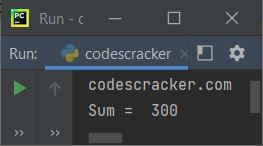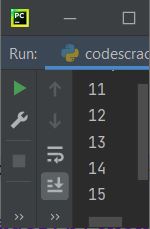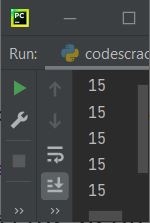- Python Basics
- Python Tutorial
- Python Applications
- Python Versions
- Python environment setup
- Python Basic Syntax
- Python end (end=)
- Python sep (sep=)
- Python Comments
- Python Identifiers
- Python Variables
- Python Operators
- Python Ternary Operator
- Python Operator Precedence
- Python Control and Decision
- Python Decision Making
- Python if elif else
- Python Loops
- Python for Loop
- Python while Loop
- Python break Statement
- Python continue Statement
- Python pass Statement
- Python break vs. continue
- Python pass vs. continue
- Python Built-in Types
- Python Data Types
- Python Lists
- Python Tuples
- Python Sets
- Python frozenset
- Python Dictionary
- List vs. Tuple vs. Dict vs. Set
- Python Numbers
- Python Strings
- Python bytes
- Python bytearray
- Python memoryview
- Python Misc Topics
- Python Functions
- Python Variable Scope
- Python Enumeration
- Python import Statement
- Python Modules
- Python operator Module
- Python os Module
- Python Date and Time
- Python Exception Handling
- Python File Handling
- Python Advanced
- Python Classes and Objects
- Python @classmethod Decorator
- Python @staticmethod Decorator
- Python Class vs. Static Method
- Python @property Decorator
- Python Keywords
- Python Keywords
- Python and
- Python or
- Python not
- Python True
- Python False
- Python None
- Python in
- Python is
- Python as
- Python with
- Python yield
- Python return
- Python del
- Python from
- Python lambda
- Python assert
- Python Built-in Functions
- Python All Built-in Functions
- Python print() Function
- Python input() Function
- Python int() Function
- Python len() Function
- Python range() Function
- Python str() Function
- Python ord() Function
- Python chr() Function
- Python read()
- Python write()
- Python open()
- Python Examples
- Python Examples
Python Identifier (with Example)
As the name suggests, an identifier is a name that identifies an object in a Python program. An object may be a variable, class, function, etc. For example:
var = "codescracker.com" a = 100 b = 200 def myfun(): print(var) class myclass: def sum(self, num_one, num_two): return num_one+num_two myfun() obj = myclass() print("Sum = ", obj.sum(a, b))
In the above program, the list of identifiers is as follows:
- var
- a
- b
- myfun
- myclass
- sum
- num_one
- num_two
- obj
where myfun and sum are the two identifiers used to name functions, myclass is another identifier used to name classes, and all others are used to name variables. Basically, identifiers are the building blocks of a Python program. The output of the preceding program should look exactly like this:

Don't worry about the code; just look at the identifiers. In the following chapters, you will learn about functions, classes, and so on.
Important: Identifiers should not be keywords.
Note: Python is a case-sensitive programming language. Case-sensitive means num, Num, NUM, nUm, and nuM are all different variables or identifiers.
How to Name an Identifier in Python
In Python, we can use a combination of letters (a-z, A-Z), numbers (0-9) and underscore (_) to name an identifier. For example, codescracker, codes_cracker, codes12cracker, codes123, etc.
Rules for Naming Identifiers in Python
Here is the list of rules that must be followed when naming or creating a variable, class, function, etc. in Python:
- Identifiers must start with a letter or an underscore.
- Or identifiers cannot start with any character other than A-Z, a-z, or _ (underscore).
- After A-Z, a-z, or _, you can use any combination of A-Z, a-z, 0-9, and _.
- Identifiers in Python cannot be named using Python's keyword.
- So, I recommend you see the list of Python keywords before naming an identifier.
Python Identifiers Example
Let's create a program in Python to prove that Python is a case-sensitive language. That is, two identifiers, say num and Num, get treated as two different identifiers by the compiler:
num = 11 Num = 12 NUM = 13 nUm = 14 nuM = 15 print(num) print(Num) print(NUM) print(nUm) print(nuM)
The snapshot given below shows the exact output produced by the above Python program:

You see! All the identifiers print different values, but the name is the same if their case gets ignored. If Python is not a case-sensitive language, then the output should be 15, five times. That is, if you replace the above program with the one given below:
num = 11 num = 12 num = 13 num = 14 num = 15 print(num) print(num) print(num) print(num) print(num)
Then the output must be equal to the snapshot given below:

« Previous Tutorial Next Tutorial »